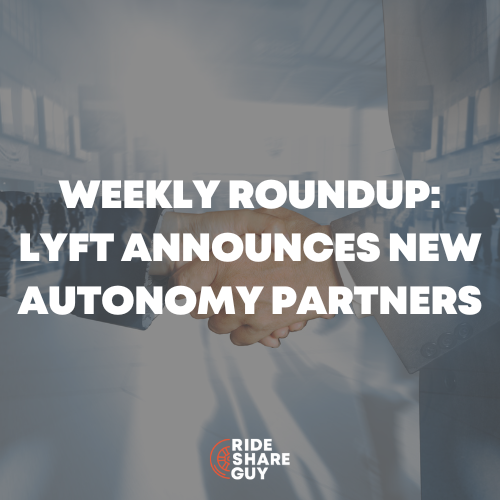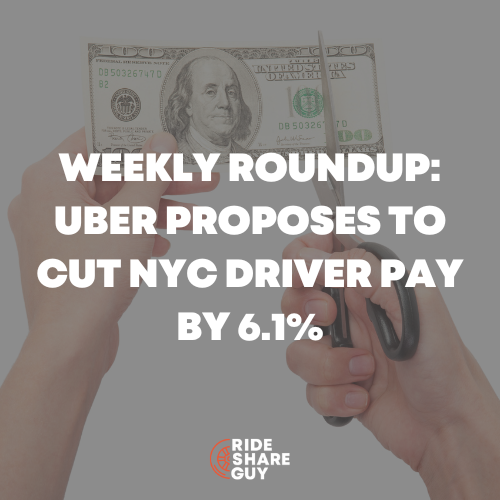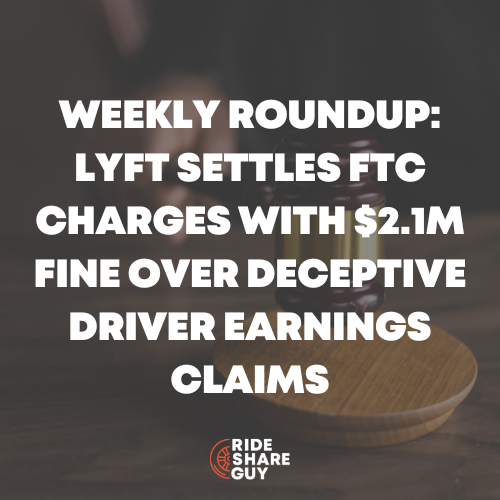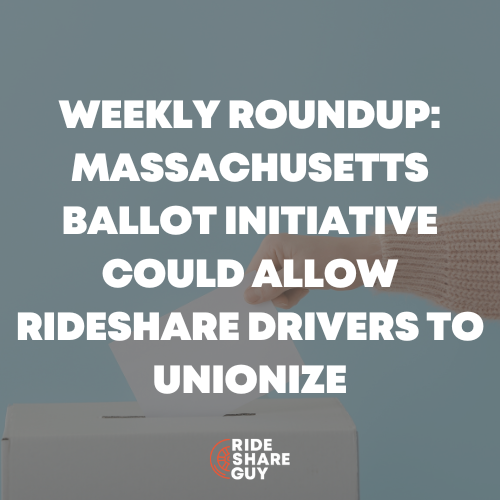Recently, our own Senior Contributor Gabe Ets-Hokin was quoted in Wired magazine saying he’d never go back to petrol. The article then pushed back a bit, quoting earnings studies and driver advocates saying rideshare drivers can’t afford an EV. Flashbacks to Ricky Ricardo yelling, “Lucy! It’s too ‘spensive!” Rather than accepting being branded as an elitist, he’s doubling down and showing us that yes, EV ownership is affordable.
Even in this era of rampant inflation and wailing and gnashing of teeth over MSRPs for Honda Civics that would buy most of a decent home in some parts of the country and year-long waiting lists for new Teslas, driving an EV can be affordable even for drivers who struggle to make a $350 car payment each month.
What? How can this be? Let’s look at EV prices, along with incentives and financing that can make EVs affordable and cheaper to own and operate than all but the most broke of hoopties.
Quick summary:
- Don’t think you can afford to get an EV? You can’t afford not to!
- There are generous incentive programs out there, both by vehicle manufacturers and government entities
- Check out our articles on the best EVs for Uber and Lyft drivers, the best rideshare vehicles under $10k, and the best cars for rideshare drivers
- Have questions about what it’s like to drive an EV for rideshare? Join our Uber and Lyft EV Drivers Facebook group here
Electric Vehicles Aren’t That Much More Expensive
Yes, EVs are ‘spensive, Ricky. So are most gasoline cars. In fact, I See Cars.com reported an average sale price of $35,000 across all used cars, although that number is skewed by lunatics paying $200,000 for used Mercedes G500s.
We’ve written ad nauseam about affordable ride-hail vehicles—you can check out best used EVs here or best new EVs here—so we won’t bore you with the deets, but a decent used EV can be found for $18,000-$25,000, if you can act fast enough to grab one.
The Nissan Leaf Plus, Chevy Bolt, Bolt EUV or Hyundai Kona EV all start under $35,000. That means the average new EV is about the same price as a used gas-burner and a new EV is less than the average MSRP – $47,000 – of a new internal combustion (ICE) car.
Electric cars are also available used, with some as cheap as $18,000. Since the average ride-hail driver drives less than the 220-mile-plus range of the Chevy, Hyundai or Nissan, we’d recommend one of these (new or used) as a good entry-level EV.
A driver with sub-prime credit will probably start looking at used cars, and that’s not a bad idea. Still, $25,000 is a lot of money for a low-income worker, especially ones who may be a credit risk. These folks are called “sub-prime” and have a credit score of less than 600, usually due to bankruptcy or short (or nonexistent) credit history.
Our advice to those of us in these particularly troubled waters is to borrow as little as possible; a few thousand extra down can go surprisingly far, because, according to NerdWallet, you’ll get socked with a 20 percent interest rate for a used car loan, which can add $50 or more to your monthly payment.
Electric Car Incentives
If your credit is a bit better, or you can muster a larger down payment or get a loan through a credit union or family member, you can swing a new car and benefit from incentives for new cars, cash or other goodies designed to help or encourage you to buy an EV.
The big one is the Federal government’s $7,500 tax credit, but I’ve excluded it from this story because you need to have paid some federal income tax to get it, and since few low-income workers pay income tax (and even if they did, they wouldn’t get the money until after they file taxes) it’s not much help, even if it’s available for the car you want.
However, the individual states do offer incentives. Some states, like California, offer them for both new and used cars. The programs are myriad and confusing, but a good place to start is here or here.
California, Texas, New York and Pennsylvania, four of the five most populous states (Florida’s EV rebate program ended when it mistakenly punched a manatee in a bar fight – Editor’s note: not unfortunately true, but good try) offer cash rebates, some available only to low-income buyers or buyers in specified areas.
Some of these incentives require home charging or trading in an older vehicle, but there are tens of thousands of ride-hail drivers who could qualify for anywhere from $1000 to $10,000 or more; the deeper you dig, the more money there is, so do your homework or ask for help!
The incentive programs go on and on. There are also savings on utility rates, registration, parking, and rebates for purchasing home charging (EVSE) equipment. It’s a swirling, confusing mess of different agencies and organizations; if you have questions, please join our Uber and Lyft Driver’s EV group on Facebook, and we’ll try to help or point you to the right resources.
A Serious Incentive
There is a significant incentive that weirdly doesn’t get a lot of attention, and that’s Uber’s Zero-Emissions Incentive. It started in September of 2020, and it pays an extra dollar to every trip completed in an electric vehicle—in fact, it pays that dollar if the driver isn’t in an EV, so long as 90 percent of the trips (for what period isn’t clear) are completed in an EV; I was paid for dozens of trips in rental cars and a hybrid when I was between EVs last year.
Uber will pay out up to $4,000 per year, but the program ends in December 2022. When pressed, Uber said it “has no plans to end the program,” but that likely means “we have no plans to end the program now.” Translation: don’t count on the program getting an extension (but it could happen).
Four thousand bucks each year is a lot of money, and even if it is only for 27 months, that’s about $9,000, $1,500 more than the Federal Government paid. If you bought an EV, got the $7,500 tax credit, then got a $2,000 state incentive, and then drove the entire ZEV incentive period enough hours and got every penny (you’d have to take 83 rides a week, which would take me 26 hours; another reason EV drivers should stick to short trips and not bother with Lyft) that’s about half the price of an EV, bringing the cost close to a used late-model hybrid, before you factor in fuel and maintenance savings. How can a low-income driver afford an EV? How can a low-income driver not afford an EV?
The Incentive Grand Slam: The $9,000, Brand-new EV
There’s more; fat cash subsidies. Not from the government but from GM and Nissan. If/when the 2022 Chevrolet Bolt and Bolt EUV are available for sale (sales of the new 2022 models are delayed until a huge battery recall program is complete), GM will offer active Uber drivers a $2,000 cash allowance. And Nissan must really want to clear out its Leaf inventory, likely because there’s a new Nissan EV (the Ariya) coming for 2023, because there’s a $6,000 rebate on all 2022 Leafs.*
The basic 2022 Leaf is the 40-kWh S model, and its base price is $28,425 with destination charge. Minus a $6,000 rebate, the $7,500 tax credit (if you can collect it), maybe another $2,000 in state incentives, $4,000 from Uber’s ZEV bonus if you work full time this year and you’re looking at a brand-new car with an eight-year, 100,000 mile battery warranty for $8,925 before tax and license. You can’t buy a decent low-mile used car for that cheap.
Of course, the 40 kWh battery is going to limit you to about 150 miles of range, but the Leaf can fast-charge twice as fast as a Bolt, meaning you can add another 50-100 miles of range in 15-30 minutes; limit yourself to shorter rides, work on those Quest bonuses and streaks, only drive the busiest times and you’ll be fine.
If you can’t overcome the range anxiety ($15,000 isn’t enough incentive to get over range anxiety? For $15,000 I’ll jello-wrestle a hungry alligator), the “Plus” model is under $14,000 with the same discounts and will happily go over 200 miles.
The base model is nicely equipped with Apple CarPlay and Bluetooth and is surprisingly roomy, with the most seat-up cargo room of any compact EV. One of our EV forum members recently bought a used one, really likes it, and has no complaints about range.
Despite that fat discount, I’d still strongly consider the Chevy, because the new EUV is a really great rideshare car, especially if you don’t exceed 240 miles a day (the Bolts have the same 50 kWh DC fast-charging as the prior-generation car, which means adding 100 miles of range can take 40 minutes or more).
However, there’s no more federal tax credit for the Bolt, and there is the matter of them bursting into flames, so GM won’t sell any until all 140,000 batteries are replaced, which could be a minute or two.
I find the Bolt more engaging to drive and think it’s nicer looking… then again, using the Bankrate loan calculator (Bankrate found the average car loan for a sub-prime borrow was about 12 percent) that Leaf S Plus’ payment is under $500 a month, since you won’t get the tax credit until you file your taxes. The shorter-range car is under $400, and refinancing can lower the payment as a borrower’s credit improves.
Again, Uber pays an extra $1 per ride; meaning your payment, for a brand-new, zero-mile EV that can work just fine for rideshare work no matter what the Internet peanut gallery shouts (plenty of drivers in our Facebook group use short-range EVs) can be about $77 a month, or $19.25 a week and I’m guessing everyone reading this has spent more money on a casual lunch.
There are still hundreds of Nissan Leafs at dealerships, and Uber confirmed the rebate is still available—if your local dealer won’t give it to you, contact us, and we’ll try to help.
Takeaways for Drivers
The zeitgeist right now is that finding an affordable EV is impossible, especially for full-time Uber drivers with lower credit scores. I would point out that with bloated gas prices, and equally bloated prices for decent used cars, a struggling full-time Uber driver can’t afford not to get an EV, as they will spend more buying a $10,000, 25-mpg 12-year-old hooptie than a brand-new (or used) $20,000 EV. And the numbers I crunched in the table above don’t include savings in maintenance, future gas price hikes, or new incentives from Uber or Lyft.
As I say in all my stories about EVs, the caveat is that an EV might not be a good fit for your geographic location or driving style. But tens of thousands of drivers would benefit, and I hope they at least consider one. If one driver can make an extra few hundred bucks a month from following our advice, this article will be worth it; if our plan doesn’t work for you, maybe you know someone it will benefit – tell us about it!
*“Leafs” is the correct pluralization here because “LEAF” is an acronym, albeit a lame one: “Leading, Environmentally Friendly Affordable Family Car.” I don’t like typing “LEAFs” because it looks like your Uncle Dave arguing on Facebook when you write in all caps. Were it named after an actual plant component the plural would be “Leaves.” Challenge me. Go ahead. I dare you. And don’t get me started with “Prius.”
What’s holding you back from switching to an electric vehicle? Let us know in the comments!
-Gabe @ RSG





